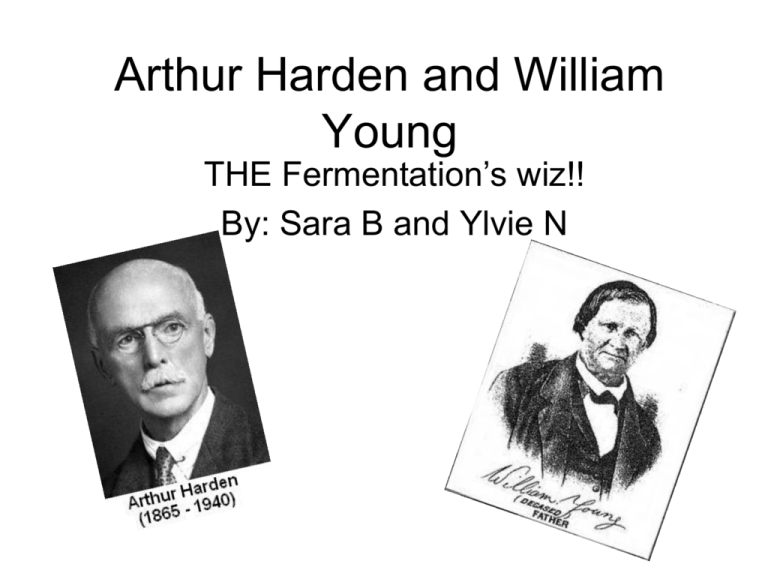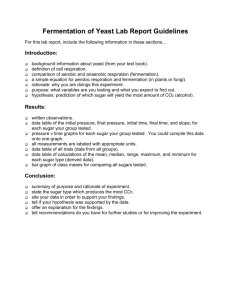Arthur Harden and William Young
advertisement

Arthur Harden and William Young THE Fermentation’s wiz!! By: Sara B and Ylvie N Wait … But Who Are They ?? • Arthur Harden is a British biochemist born on October 12th 1865 . In 1929, he won a Nobel prize for his work on fermentation and fermentative enzymes. • For one of his experiment, he worked with another English biochemist called William Young. How Did They Come Up With This Experiment?? • Allan Macfadyen, Arthur’s professor, attempted to make up an anti-zymase. IN order to do this, he injected a yeast juice in some animals. From MacFadyen’s results of this experiment, Harden and Young knew that phosphates was important in alcohol fermentation . What they did not know was How Is phosphate Important… Okay… Now They Know This!! What’s Next??? • In order to study the effect of phosphate on the injected animals, these scientists studied regular serum in comparison to the effect of the infected serum on the yeast juice. They were able to observe 2 things : for one , in the presence of the serum, the catalyzing capability of Yeast Juice were greatly diminished. Also, they were able to observe that the rate of fermentation and the total amount of products it yielded increased significantly. Did They Have a Hypothesis? • Facing all this experiments, the pair thought that it might have been due to the presence of the products proteolysis (breakdown of proteins or peptides with amino acids) might exert in antiproteolytic. 3 Types of Fermentation Continuation… • A fairly rapid fermentation (Curve 1) where sugar is decomposed into CO2 and alcohol, and once the inorganic phosphate is converted into ester or sugar that builds up. When the sugar of the inorganic molecule stops, the rate of fermentation falls and the build of ester also stops and the fermentation passes to Type 2 of fermentation. • A slow fermentation (Curve 2) in which the rate at which fermentation occurs is controlled by the rate at which inorganic phosphate is complete by the hydrolysis (breakdown of compound due to water) of the phosphoric esters present in the system. The inorganic phosphate is then reconverted into a sugar-phosphoric ester enlightened by hydrolysis, then the fermentation proceeds at a steady rate. This type of fermentation which goes on when sugar is added from an active yeast and the process is allowed to proceed at a steady rate. Continuation…. • Now in the fermentation mixture in which Type 2 fermentation is introduced of phosphatase, capable of hydrolysing the sugar-phosphoric ester therefore the increasing the rate of supply of inorganic phosphate. The fermentation also rises. But this is from Harden and Macfarlane with unpublished results. • http://adb.anu.edu.au/biography/youngwilliam-john-9220 • http://humantouchofchemistry.com/arthurharden.htm • http://www.nobelprize.org/nobel_prizes/ch emistry/laureates/1929/harden-lecture.pdf







